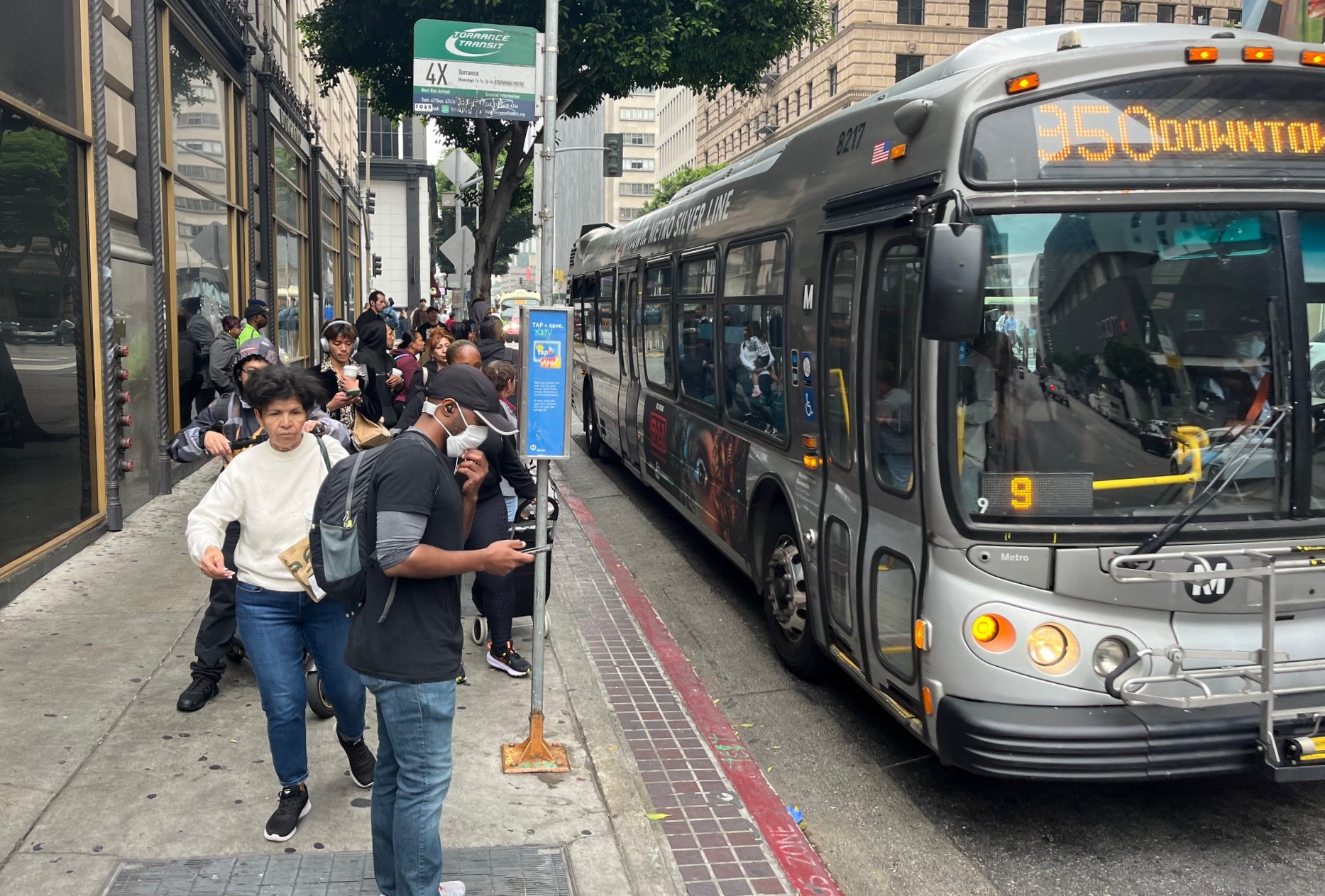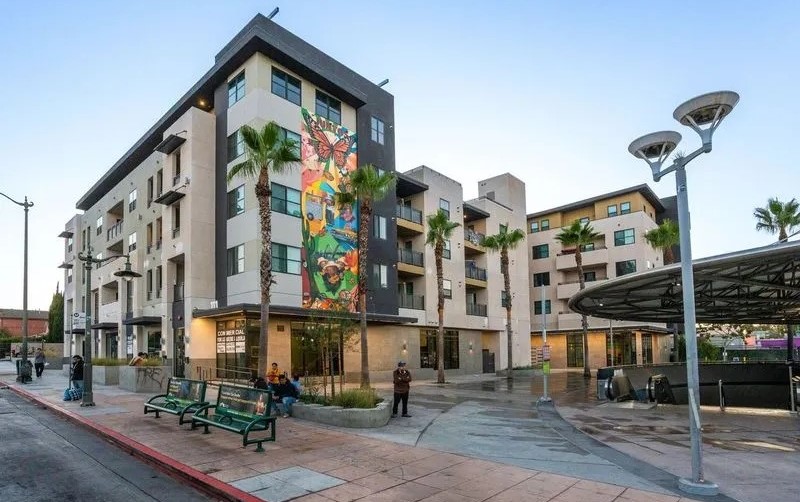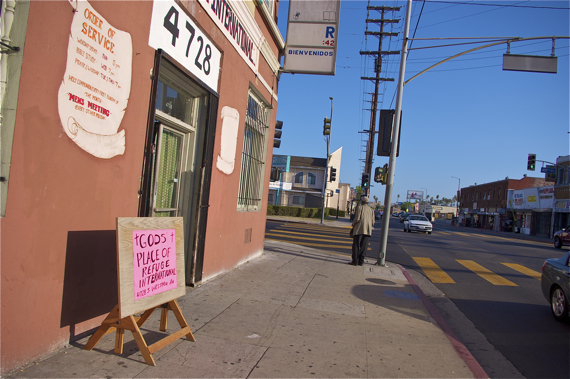
"We need to empower people to see their streets as sites of recreation."
It's somewhat of a city planner mantra.
And, it tends to drive me crazy.
Part of it has to do with my having been an academic in my previous life, where I spent years observing efforts to "empower" refugees, displaced persons, sex trafficking victims, genocide survivors, and the desperately poor to take charge of their circumstances. The focus on modifying individual behaviors precluded dialogue on the mix of structural and individual interventions that might have yielded more comprehensive solutions to what were, essentially, deeply-rooted structural problems. As a result, outcomes were often superficial and/or unsustainable at best and irreparably damaging to people's livelihoods at worst.*
Yet "empower" soldiers on, both abroad and right here at home.
I hear it all the time.
I heard it most recently at the well-attended Community Planning Forum held at Martin Luther King Jr. Recreational Center on Western Ave. in South L.A. at the end of March.
It was all I could do to keep myself from dragging the poor person outside to show them the street was already very heavily used for recreation. Just the wrong kind.
There are a few sections of Western -- including areas in close proximity to the park -- known as "strolls."
Day or night, rain or shine, you can find a girl on the street that can help meet your "needs" for a few dollars.
They sit at bus stops, stand on corners, walk up and down the block, dance by themselves on quiet side streets just out of the glare of the main drag, brazenly post up like sentries at the driveway entrance of the Mustang Motel -- they are ubiquitous.
While a number of them are older and may be working independently and/or feeding drug habits (especially north of King Blvd., according to some residents), many are just teens, coerced into the trade by men claiming to be their boyfriends, rapists that abused them and turned them out, or their own history of sexual abuse and neglect. The hold their pimps have on them can be tremendous. It is not unusual for girls show up in juvenile detention centers with their pimps' names tattooed onto their ribs and so thoroughly victimized that they fight anyone trying to help them get out of the trade. Some don't believe they could ever be valued for anything other than their bodies, especially after being abused. Others believe their pimps love them and refuse to say anything that would incriminate them.
But, the pimps clearly do not love them.
Spend any time along Western and you'll see them, stationed in parked cars at corners (and, occasionally, on mountain bikes), perfectly positioned so that they can see everything happening on the street. They are ready to menace their girls or anyone who takes too much of an other-than-recreational interest in their charge(s) at a moment's notice.
The intense level of neglect a street -- and, indeed, a community -- must experience (this was the stomping ground of the Grim Sleeper, after all) for it to be able to function so openly as a market facilitates other forms of unhealthy activity, too. While long-time residents tell me that things are much better than they used to be, gang activity and substance abuse, particularly that of those living on (or making a living on) the street, are still major issues in the area.

The combination of these factors can make locals paranoid about interacting with outsiders for fear of being seen as snitching.
And, it can certainly go a long way in keeping a family from feeling comfortable about taking a stroll through the neighborhood, waiting at bus stops, getting to know their neighbors along the Western corridor, or being outside too late in the evening.
"Everybody knows you gotta be off the street by 8, 9 p.m.," a man living next to an abandoned home told me. "You do that, and you should be OK."
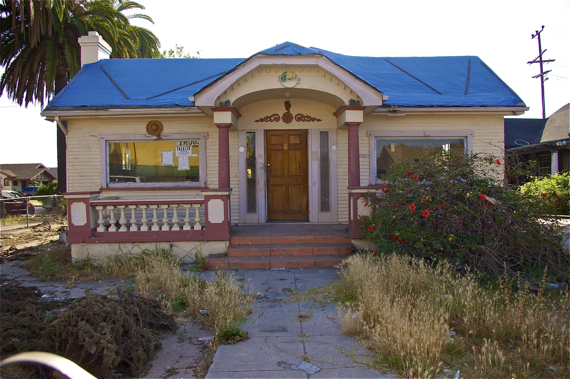
While it's true you probably will be OK during the day, you can still be exposed to all sorts of unsavory things.
Yesterday afternoon, for example, I was propositioned for sex (while walking with my bicycle) by one man and treated to a very graphic description by another of how much he appreciated his prostitute not having any front teeth because it made it easier for her to suck him off. Another man talking about the pervasiveness of prostitution speculated that a recent hit-and-run of someone he knew was deliberate -- that the woman might have been intentionally run down by her pimp.
"It's a damn shame seeing all these girls out here," he said.
Responding to the seeming intransigence of the problem in the area, the April 26th March Against Trafficking along Western (between King Blvd. and Slauson Ave.) was intended to begin the process of "empowering" residents to reclaim the public space for healthier activities and to make a statement that the people of this city cared about its children and young women.
Hundreds marched, brandished signs, and cheered their way down Western to a rally point near Slauson.
"We see you" speakers including Mayors Eric Garcetti and Aja Brown, County Supervisor Mark Ridley-Thomas, State Assemblywoman Holly Mitchell, Councilmembers Curren Price and Nury Martinez, and other notables said of the pimps. "Our children are not for sale!"
But, within hours of the rally, the protesters were gone and it was back to business as usual along the avenue.
Walking back up to King Park from the Slauson rally point, I spoke with two women from the area who volunteer with young girls about their thoughts on where solutions might lay.
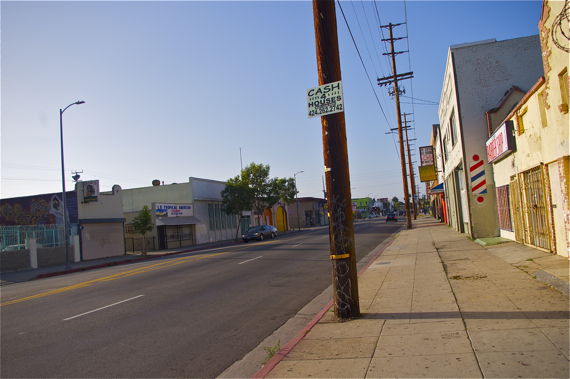
They said they appreciated the efforts of many of the legislators present at the rally to address the issue through more programming for youth caught up in the trade (like Senate Bill 1388, which targets johns, or D.A. Jackie Lacey's effort to create a diversion program for juveniles), but felt that the most important work lay in prevention and early intervention.
One mentioned that her group -- which normally worked to build self-esteem in middle school girls and provide them with resources and role models -- had recently been asked to begin speaking with elementary school girls. Waiting until they hit middle school, the woman said, was too late.
The other spoke of the importance of family support networks and the unfortunate reality that too many kids in the area had been in and out of the foster system since a very young age. The lack of stability and people to turn to for protection from predatory or abusive behavior was what was putting kids at risk. And, even once kids were removed from an abusive situation, they didn't necessarily get the follow-on counseling and support that they would need to recover.
Educating and "empowering" girls could only go so far, the women concluded. The burden of warding off predators shouldn't fall entirely on the shoulders of children.
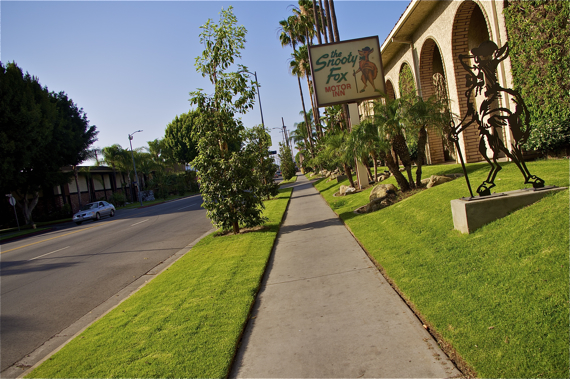
As we were about to part ways, one of the women held up the stick of her now-eaten lollipop and mused that she hadn't seen a garbage can in almost 20 blocks.
We had passed piles of trash (including empty condom boxes), filthy bus stops, decrepit parkways, and even several "Our children are not for sale!" signs that had been tossed aside after the march, but few trash cans. And, ironically, the only stretch of the corridor with truly lovely landscaping and pristine sidewalks had been that in front of the Snooty Fox and the Mustang, two of the area motels with hourly rates.
The excessive filth and lack of amenities along the rest of the avenue, she and her friend concluded, made it clear that nobody was paying attention to what was happening there. Cleaning up the streets and monitoring the motels might therefore go farther in sending the pimps the message the march had tried to convey -- that somebody actually was watching them. It wouldn't be enough, they agreed, because the problem would just move elsewhere. But it could complement efforts to get at the roots of what facilitated the trade in children by providing them with a more pleasant and welcoming environment.
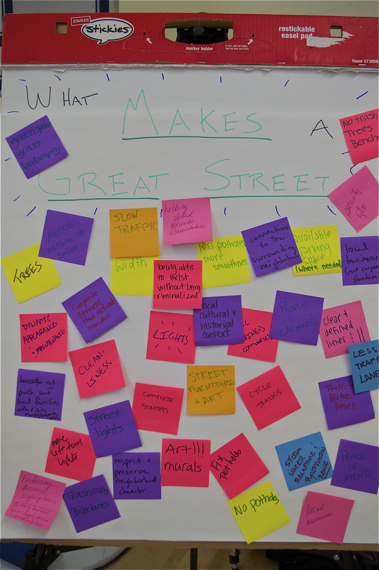
As I retrieved my bike from King Park, I wondered why some of these challenges that have long-plagued Western really hadn't come up [at least from what I heard/saw] at the planning forum the month before. If the issues had come up, I didn't see them listed on post-its or the comment boards around the room.
It certainly wasn't for a lack of interest on the part of the planners there. Having several stations with different plans for people to engage was fantastic. While it could be a little overwhelming, it gave people lots to think about and made speaking to planners much less intimidating.
I think, instead, it was more a function of the challenge of getting genuine community feedback from a wide cross-section of residents -- especially those whose street access and mobility are constrained by the community dynamics -- and creating space for people to talk about where things stand now.
By the latter, I mean looking at the specific challenges that keep streets, parks, and neighborhoods from being "complete" or "great" at present. Not for the purpose of wallowing in why particular neighborhoods struggle, of course, but so that appropriate non-infrastructural fixes can accompany any new infrastructure that goes in, allowing residents to get the maximum benefit from them.
As I detailed in the story of a kickball tournament in Watts, the upgrades to Ted Watkins Park have made it infinitely more welcoming and transformed it into a jewel of the community. But, the intense gang activity in the area means that, unless there is programming for at-risk teens and young adults, it is still not a resource that they necessarily have the freedom to enjoy.
The Plan for a Healthy L.A. seems to be intended to begin to close some of those gaps by laying a blueprint for the kinds of programs and priorities the city should have to shore up the socio-economic foundations of its most vulnerable communities. But, the plan was also quite general, not exploring ways to link infrastructure improvements to programming often enough or recommending that the two go hand in hand. And, the bigger-picture approach meant that it privileged things like urban agriculture over the specific needs of corridors like Western, where services for foster youth and support programs for young girls (not mentioned at all in the plan) might be more appropriate, at least in the interim.
But, as someone who spends most of her time wandering around communities and pestering people about the specific challenges they face, I may be too deeply mired in what's wrong and not spending enough time envisioning what could be right 10 or 20 years down the line.
I'm not sure what the right balance is.
That said, we tried to figure out what that balance and engagement process might look like with a series of workshops at Roosevelt High School over the past month. The second part of this piece (coming later this week) will describe that process, the knowledge we gained and how it might be used, what value it might have for those interested in reaching harder-to-engage residents, and how better approaches to engagement might even be helpful in, yes, genuinely "empowering" communities. Stay tuned.
* * * *
*i.e. Cases in Malawi, where a major aid agency's short-term agricultural program aimed at crop diversification "empowered" people to abandon growing maize in favor of new cash crops without factoring in the need for appropriate storage facilities, the lack of demand in local markets, or transportation to distant markets. As the agency felt that building a storage facility or helping with transportation would only create "dependency," they decided to "empower people to find their own markets." But because most people lack transportation outside of a rickety bicycle and markets can be days or weeks away by bike, 300,000 tons of nuts spoiled and/or were sold at a loss. And farmers found themselves dependent on the agency for food and seeds until the next growing season.
